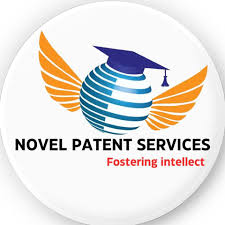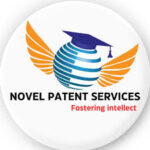Office Action Responses
An office action response is a formal response that a patent applicant or their representative submits to the United States Patent and Trademark Office (USPTO) in response to an office action. An office action is a written notification from the USPTO that raises issues or objections regarding a patent application.
The office action response typically includes arguments and evidence to address the USPTO’s objections, as well as any necessary amendments to the patent application.
The response must be filed within a specified time frame, usually three months from the date of the office action, although extensions of time may be available in certain circumstances.
The office action response is an important part of the patent application process, as it provides the applicant with an opportunity to overcome any objections and move the application towards issuance as a granted patent.
Benefits of choosing us as your Patent Attorney
- Improve the chances of patent success by working around existing inventions
- You can gain confidence in the patentability of your invention
- Defend your patent
- We will analyze patent results whether your invention is patentable
- We have 18 years experience in filing a patent applications and can save you time
TYPES OF OFFICE ACTION RESPONSES..…
There are several different types of office action responses that a patent applicant may submit to the United States Patent and Trademark Office (USPTO), depending on the nature of the issues or objections raised in the office action.
Surrender Response
This type of response is filed when the applicant decides to abandon the patent application in response to the USPTO’s objections
Request for Continued Examination (RCE) Response
This type of response is filed when the applicant wishes to continue prosecution of the patent application after receiving a final rejection from the USPTO.
Information disclosure statement (IDS) Response
This type of response is filed when the applicant submits additional prior art references that were not previously disclosed to the USPTO during the examination of the patent application.
- It is important to note that responding to an office action can be a complex and time-consuming process that requires a thorough understanding of patent law and USPTO procedures.
- Failure to respond adequately to an office action can result in the rejection or abandonment of the patent application.
Furthermore, it is important to note that filing an office action response does not guarantee the grant of a patent. The USPTO may still have further objections or may require additional information or clarification before granting the patent.
CAN I RESPOND TO OFFICE ACTION RESPONSE MYSELF
- You can respond to an office action response yourself, but it is important to keep in mind that the process can be complex and challenging, and it requires a thorough understanding of patent law and USPTO procedures.
- If you choose to respond to an office action response yourself, you should carefully review the office action and any relevant laws, regulations, and guidelines.
- You should also be prepared to conduct legal and technical research to support your arguments and amendments.
However, it is highly recommended that you seek the assistance of a registered patent attorney or agent if you are not familiar with the patent application process or if the issues raised in the office action are complex. An experienced patent attorney or agent can help you understand the USPTO’s objections, develop a strategy for responding to the office action, and prepare a strong response that addresses the USPTO’s concerns and improves the chances of obtaining a granted patent.
RISKS OF RESPONDING TO MY OWN OFFICE ACTION RESPONSES MYSELF
Missing important deadlines
The USPTO imposes strict deadlines for responding to office actions, and missing these deadlines can result in the abandonment of your patent application.
Inadequate response
If you are not familiar with the USPTO’s guidelines and procedures, you may submit an inadequate response that fails to address the USPTO’s objections or that includes errors that could harm your chances of obtaining a granted patent.
Infringement risks
Responding to an office action requires a thorough understanding of the patent landscape, including existing patents and patent applications. If you are not familiar with the relevant patents and applications, you may inadvertently infringe on existing patents or miss opportunities to differentiate your invention from existing patents.
Time-consuming process
Preparing and filing an office action response can be a time-consuming and complex process that requires legal and technical research, as well as a thorough understanding of USPTO procedures. If you are not familiar with the process, it may take you longer to prepare an adequate response, which could delay the examination of your patent application.
Therefore, it is highly recommended that you seek the assistance of a registered patent attorney or agent if you are not familiar with the patent application process or if the issues raised in the office action are complex. An experienced patent attorney or agent can help you understand the USPTO’s objections, develop a strategy for responding to the office action, and prepare a strong response that addresses the USPTO’s concerns and improves the chances of obtaining a granted patent.
PROTECT YOUR IDEAS
WITH
AFFORDABLE & PROFESSIONAL OFFICE ACTION RESPONSE
Are you an inventor or entrepreneur with a unique idea? Do you want to protect your intellectual property and ensure that your idea is original?
An office action response is a formal document submitted by a patent applicant to the United States Patent and Trademark Office (USPTO) in response to an office action, which is a written communication from the USPTO that sets forth any issues, objections, or rejections with respect to the patent application. The office action response is an important part of the patent application process and typically includes arguments, amendments, and evidence to overcome the USPTO’s objections and move the application towards issuance as a granted patent. A well-prepared office action response can help ensure that the applicant’s invention receives the strongest possible patent protection, while an inadequate or incomplete response can result in the rejection or abandonment of the patent application.



